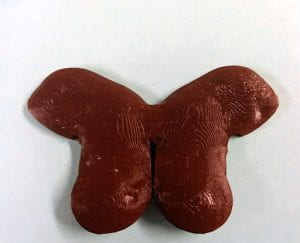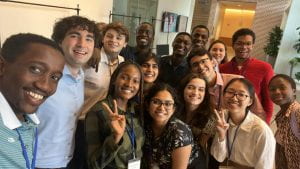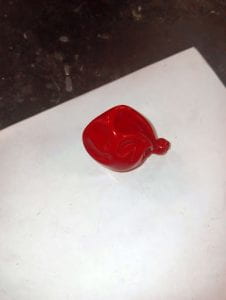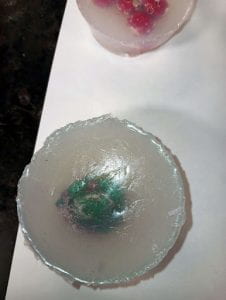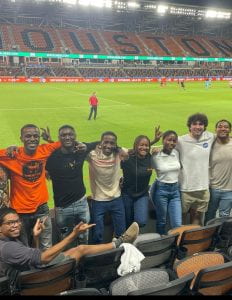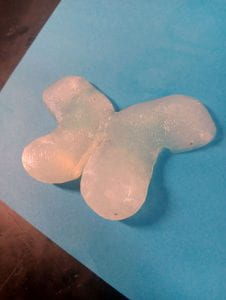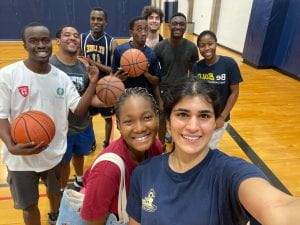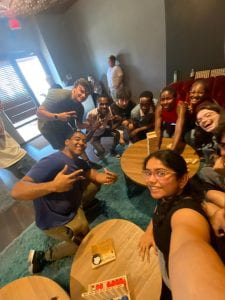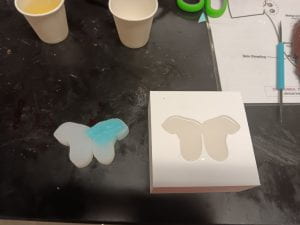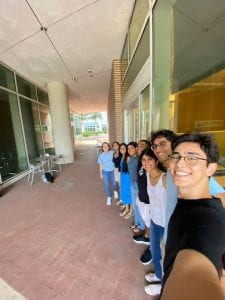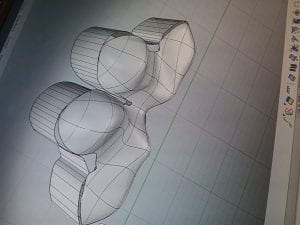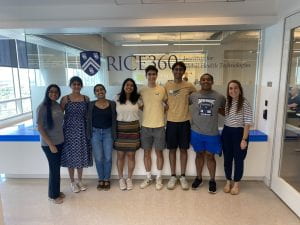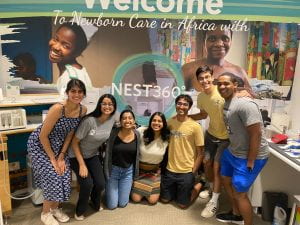Hello everybody, thank you for tuning in to my final week of blog posts!
This week saw so many positives, as it felt like we finally began to see the fruits of our labor come to be. We’ve worked very hard on our model, and I am personally so happy with the work we’ve done, and hopeful for where we can take this prototype in the future!
To refresh you all from last week, we had two primary areas of concern to address before we prepared our model for the showcase: Our most pressing need was to find a new material for our cyst, as our model’s version was much too soft, and not able to be readily detected within our gel. We left off by developing a cyst made of the same silicone material as our fatty breast tissue, encased in a balloon to ensure movement.
Additionally, the main issue with our fibroadenoma was the inability to move it in tissue, as typically these lesions are relatively mobile in tissue. Following some more brainstorming, we ended up using reusing one of our prior findings from developing our cyst. We ended up using the same Ecoflex 00-30 silicone material, but instead enclosing it within a balloon to ensure the same relative movement you would expect from a cyst. These two lesions are often described as very similar in most qualities, including movement within the tissue. The main distinction between the two is the density of each of the masses.
With our findings and new lesions at hand, we had our clinician meeting this past Wednesday at the OEDK. Much to our chagrin, they were very impressed by the new models of these lesions! They had said that these two lesions actually happened to have the most tactile accuracy of all aspects of our model thus far. That being the case, we had one more step that we needed to take: scaling our model up to have a full model at hand.
Following our clinician meeting, we spent the rest of Wednesday combining all components of our model to present a larger, half-scale model for the showcase. To be honest, I was quite a bit nervous about how this final prototype would turn out, as it wasn’t until that day that we had attempted to upscale to this degree. Fortunately for us, our model came out great! We were able to successfully suspend all lesions within our fatty tissue and a model ready to showcase.
Note: You may not be able to see me in this picture. I am not the tallest so I got blocked out in the back haha…
Thus, we presented our model and celebrated its completion alongside a cookie-making night and some special times with my fellow colleagues. It felt so liberating to see this project come to life, and I am so grateful to have learned so much. This internship has helped me become a better thinker, a better engineer, a better listener, and as a whole, a better person. Getting to work alongside so many gifted individuals and different perspectives has absolutely left an impact on my life. And I am all the more thankful for it.
Thank you for joining me in this journey!
~Philip DuBose
